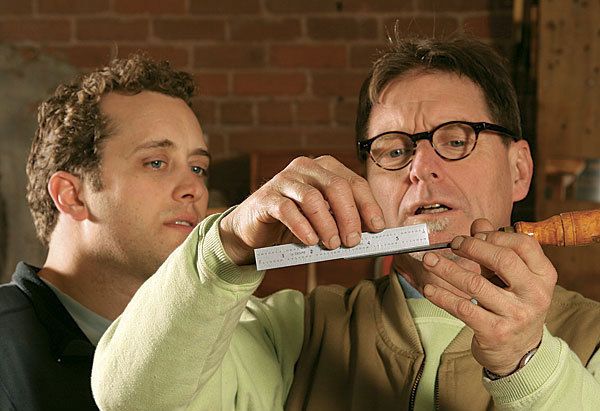A Visit to the Sharpening Doctor
Two readers hone their skills with help from our expert

Synopsis: Two “patients” came to Fine Woodworking and contributing editor Gary Rogowski for help with one of woodworking’s more common woes-sharpening. Both Aaron Petersen and Marco Cecala are longtime power-tool woodworkers who had starting using hand tools within the past few years. Petersen was most frustrated with his chisels; Cecala with his handplane blades. Look on as they learn the secrets to a sharp edge: flattening the back, achieving a good hollow-grind bevel, and finally, honing the edge.
|
Sharpening Doctor in Action Introduction |
From Fine Woodworking #206
For decades, Fine Woodworking’s tradition has been to offer expert guidance from great woodworkers, helping readers learn new techniques and avoid mistakes. But try as we might, we can’t always anticipate which parts of a woodworking task will trip a reader up.
So we stopped trying to guess.
Late last year, we experimented with a brand-new kind of article. In “A Trip to the Dovetail Doctor” (FWW #201), we let you follow along and learn from a fellow reader’s mistakes as he struggled with one of woodworking’s most familiar but challenging tasks. Contributing editor Gary Rogowski corrected his flaws in technique and answered his questions, letting us pinpoint some often lingering misconceptions.
Now the experiment continues.
We sought new patients for the woodworking doctor, asking readers which tasks—despite careful study and practice— continue to frustrate them. The most common cry for help came from readers who’ve fallen in love with hand tools but can’t quite master the dance of getting them sharp.
To make sure we would encounter a broad range of problems, we chose two patients: Aaron Petersen of Grand Rapids, Mich., and Marco Cecala of Phoenix.
“My sharpening skills have been built on reading articles in your magazine and online, watching videos, and trial and error— mostly error,” Petersen told us. “Without understanding what it’s like to use a truly sharp edge, it’s hard to know if I’m doing it correctly.”
Both Petersen and Cecala are longtime power-tool woodworkers who started using hand tools in the last couple of years. Each man was frustrated by inconsistent sharpening results. And, with our help, both traveled to Rogowski’s school in Portland, Ore., to figure out why.
The doctor reviews the symptoms: We met at the Northwest Woodworking Studio on a chilly February morning. As Petersen and Cecala unpacked their tools, the brightly polished backs and bevels said both had worked hard on sharpening. Still, a quick test in end-grain pine showed that the edges weren’t quite right. Softwood end grain is a great gauge of sharpness. Instead of slicing cleanly, a dull edge will push over the pliable fibers, tearing and crushing them and leaving a rough surface.
Petersen’s chisels—the chief focus of his frustration—cut inconsistently, fighting him at first and then slicing suddenly forward. Cecala’s plea for help centered on his handplanes: They turned end grain to dust instead of shavings. On edge and face grain, the planes took a shaving but left unacceptable tearout. And after feeling the silky, unblemished surfaces left by Rogowski’s planes, Cecala was starting to see room for improvement.
For the full article, download the PDF below:
Fine Woodworking Recommended Products

Honing Compound

Wen Diamond Grinding Wheel







Log in or create an account to post a comment.
Sign up Log in